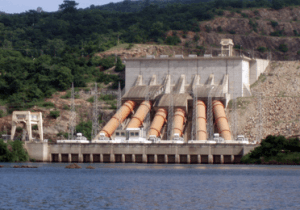Geologist calls for reactivation of Barekese hydro-power project

Dr Seth Agyemang, a Geologist, has called for bold action to reactivate the Barakese hydro-electric project, left abandoned after the overthrow of the Nkrumah Administration.
This comes as the nation struggles to deal with power crises that is crippling businesses and fueling public outrage.
Dr Agyemang insisted that the project is feasible and would make significant addition to the generation mix.
The Barekese Dam, which has been supplying drinking water to Kumasi and outlying districts, was structurally designed to serve a dual purpose of energy generation and potable water supply.
Some works on the power infrastructure including turbines installation was done but the dream was cut short when the military removed the government of Dr Kwame Nkrumah in a coup d’ e’tat.
Dr. Agyemang, also a Research Scientist, told Ghana News Agency (GNA) that the government must find the money to implement the project.
He said efforts need to be focused on developing small hydro-power sites like that of the Barekese Dam to help meet the country’s growing energy demands and stop the erratic electricity supply.
These sites, he noted, hold enormous potential and everything must be done to ensure that they are fully utilised.
Hydro-power has proven to be a cheaper source of energy and it is therefore no accident that many advanced nations are now investing heavily in such projects to augment other sources of renewable energy.
An official of the Ghana Water Company Limited, Mr David Asamoah, confirmed that the Dam, which covers a catchment area of 351 square miles, has the capacity to generate electricity.
The worrying problem is the massive encroachment by farmers, illegal loggers and developers, which he said would have to be dealt with to make sure that the water volume is sustained.
He warned that the situation where “we have excess water only for few months during the year”, could pose a serious threat, given the fact that large volumes of water would be required to power the turbines.
Information gathered by the GNA at the Energy Commission showed that there was an attempt by the Kufuor Administration to resurrect the project in year 2005.
The government signed an agreement with the United Nations Industrial Development Organisation, to revive it alongside the development of four other hydro-power sites in the Volta, Eastern, Western and Brong-Ahafo Regions.
Source: GNA
